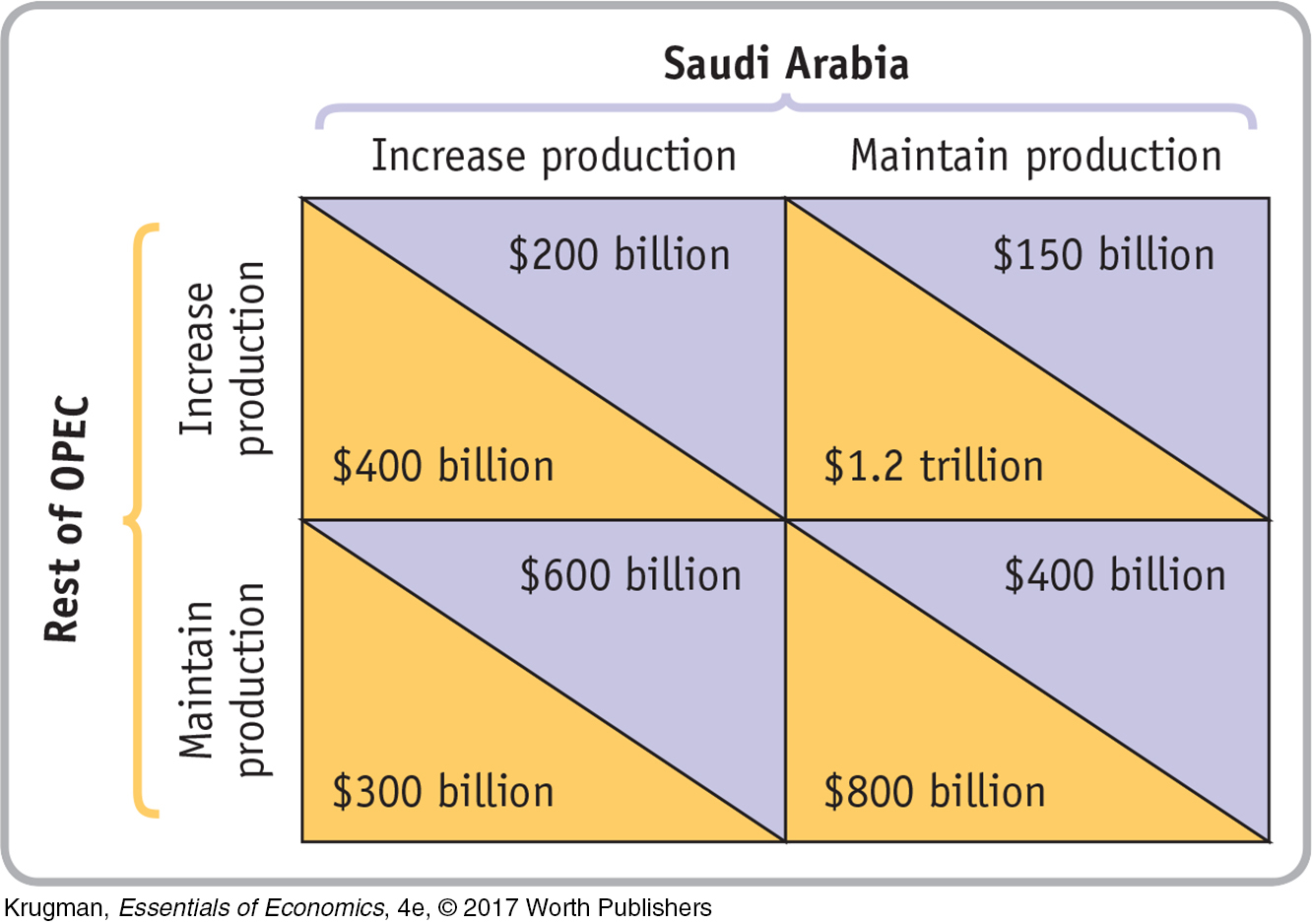9.4 Solved Problem
SOLVED PROBLEM The Ups (and Downs) of Oil Prices
 for interactive tutorials with step-
for interactive tutorials with step-
The world’s best known cartel is OPEC, the Organization of Petroleum Exporting Countries, discussed in the preceding Economics in Action. The 13 national governments that comprise OPEC export nearly $1 trillion of petroleum products every year. As the largest producer, Saudi Arabia produces one-
Our players, Saudi Arabia and other OPEC members, must collectively decide whether to maintain or increase oil production levels:
If both parties choose to maintain oil production levels, the price of oil and subsequently the total value of oil exports from each country will stay the same.
If one of the parties decides to increase oil production the price of oil will decrease.

If either party independently increases production the value of oil exports will increase, but if both parties increase production the value of total exports will decrease.
The payoff matrix at right displays the actions both Saudi Arabia and the rest of OPEC could take, as well as the outcomes for each (expressed as the annual total value of oil exports). Find the dominant strategies for Saudi Arabia and the rest of OPEC, the Nash (or noncooperative) equilibrium, and the outcome that results under tacit collusion.
STEP | 1 Determine the dominant strategy for Saudi Arabia and then for the rest of OPEC.Review pages 270–272.
In this particular case, the dominant strategy for both Saudi Arabia and the rest of OPEC is to always increase production. Saudi Arabia is always better off increasing production independent of the actions taken by the rest of OPEC. Referring to the accompanying payoff matrix, you can see that if the other OPEC members choose to maintain production, Saudi Arabia can increase production and increase total exports to $600 billion, which is more than the $400 billion they would receive by maintaining production levels. If the rest of OPEC chooses to increase production, Saudi Arabia can offset some of their losses by increasing production as well, allowing them to earn $200 billion, instead of $150 billion. Because the rest of OPEC faces the same incentives as Saudi Arabia, it is in their best interest to increase production as well.
STEP | 2 Find the noncooperative or Nash equilibrium. Then determine if Saudi Arabia and the rest of OPEC choose to increase or decrease production.Review pages 270–272.
The noncooperative, Nash, equilibrium will occur when both parties increase production and Saudi Arabia exports $200 billion of oil and the rest of OPEC exports $400 billion. In this case both parties are following their dominant strategy. Despite leaving both parties worse off, neither party has an incentive to change their action, hence the prisoners’ dilemma.
STEP | 3 Explain what the outcome would be if Saudi Arabia and the rest of OPEC engaged in a repeated game and followed a tit-
In reality, both Saudi and the rest of OPEC play a repeated game. They are in a situation where they must choose their production levels for many years to come. If Saudi Arabia leads by maintaining production levels, using a tit-